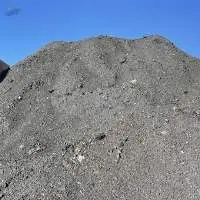
Features
1.RJ45 Full shielded with zinc alloy housing
2.IEC 60603-7, ISO/IEC 11801
3.IEEE 802.3af /at / bt
4.Suitable for 23-26AWG stranded and solid wire
5.Cable outer diameter: 6.0 to 7.5mm
6.Easy, quickly, reliable and comfortable installation
7.Suitable for cabling from home networks to large data centers
Can supply: approx. 95% HDPE - approx. 5% PP GRIND (REGRIND) FROM CAPS MIXED COLORS IN BIG BAGS. Size 8-10mm. Post commercial. Clean. No foreign bodies inside. Can load in 1x40' HC container approx. 23 MT (10%) Ready for shipment. Photos available upon request. If you are interested kindly contact us for more information (price, available quantity etc.). You are welcome to visit our company premises and supervise our materials. Certificate ISO: 9001, ISO: 14001, OHSAS 45001, AQSIQ and CCIC.
Can supply: PP Grind (Regrind) From Crates Mix Color In Big Bags Scrap/waste. Size 8-10mm. Injection grade. Post industrial and post commercial. Clean. No foreign bodies inside. Can load in 1x40' HC container approx. 24 MT (�?�± 10%). Ready for shipment. Photos available upon request. If you are interested kindly contact us for more information (price, available quantity etc.). You are welcome to visit our company premises and supervise our materials. Certificate ISO: 9001, ISO: 14001, OHSAS 45001, AQSIQ and CCIC.
Can supply: HDPE GRIND (REGRIND) From Crates Sorted Color And Mix Color In Big Bags. Size 8-10mm. Injection grade. Post industrial and post commercial. Clean. No foreign bodies inside. Can load in 1x40' HC container approx. 24 MT (10%) Ready for shipment. Photos available upon request. If you are interested kindly contact us for more information (price, available quantity etc.). You are welcome to visit our company premises and supervise our materials. Certificate ISO: 9001, ISO: 14001, OHSAS 45001, AQSIQ and CCIC.
The Aluminium Incinerated scrap is the by-product derived from the reprocessing IBA Incinerator bottom ash). It can be classified as follows: Basel code B1010. EW Code: 17 04 02. With a low melting point at 660'C, on visual inspection, aluminium can be found as melted and re-solidified particles or rocks. This happens to aluminium foil that is converted into small droplets during the incineration process. Some larger and thicker aluminium packaging items can still be partially recognised as they retain their shape. The heterogeneous nature of the processed material is due to the diversified conditions present in the combustion chamber, (some relatively cooler regions in the furnace). The stock can contain all kind of aluminium packing. We can currently provide this material in three different fractions and with different aluminium content: 3-8 mm split in two different qualities: 65% ± 3% Al 85% ± 3% Al 8-16 mm: about 70% ± 3% Al 16-60 mm: about 80% ± 3% Al The material contains minor impurities typically stones, ash, glass. Such components are inherent and adhere to the scrap surface. The total impurities can be sorted, but not fully removed. The collected stock is stored in warehouse on cemented flooring. It can be loaded loose in 20' Feet heavy duty container.
Mill scale, is formed on the outer surfaces of plates, sheets or profiles when they are being produced by rolling hot iron or steel billets in rolling or steel mills. It looks like a hard brittle sand and is mainly composed of iron oxides, mostly ferric, and is bluish black in color. Being produced during the reheating, conditioning and hot rolling operation for the production of steel articles, the mill scale initially adheres to the steel surface and protects it from atmospheric corrosion, provided no break occurs in this coating. From the chemical and physical analysis performed on the scrap, and according to the european environmental rules, the material has been classified as a special non dangerous waste, listed in green list In particular the mill scale can be classified as follows: Einecs (european commission no.): 266-007-8 Waste code: 10 02 10 Basel code: b 12 30 Hs code: 2619.00
We are glad to propose 500 MT of stain less steel mill scale. Mill scale is formed on the outer surfaces during by the hot rolling lamination of stainless-steel products. At a visual inspection the material is a hard brittle sand and is mainly composed of iron oxides, mostly ferric, and is bluish black in colour, but it also contains considerable alloying elements such as chromium and nickel. The recovery ratio after melting in furnace for the most valuable alloy elements is: - Ni: 3.5 - 4.5% - Cr: 6-8% From the chemical and physical analysis performed on the scrap, and according to the European environmental rules, the material has been classified as a special non dangerous waste, listed in green list. In particular the mill scale can be classified as follows: Waste code: 10 02 10 The material is stored on cemented flooring, and it can be loaded loose in tipper trucks or containers. Chemical analysis of the material is available on request.





